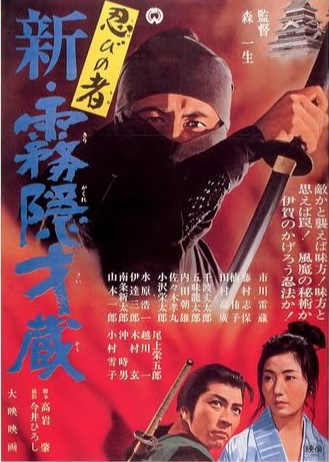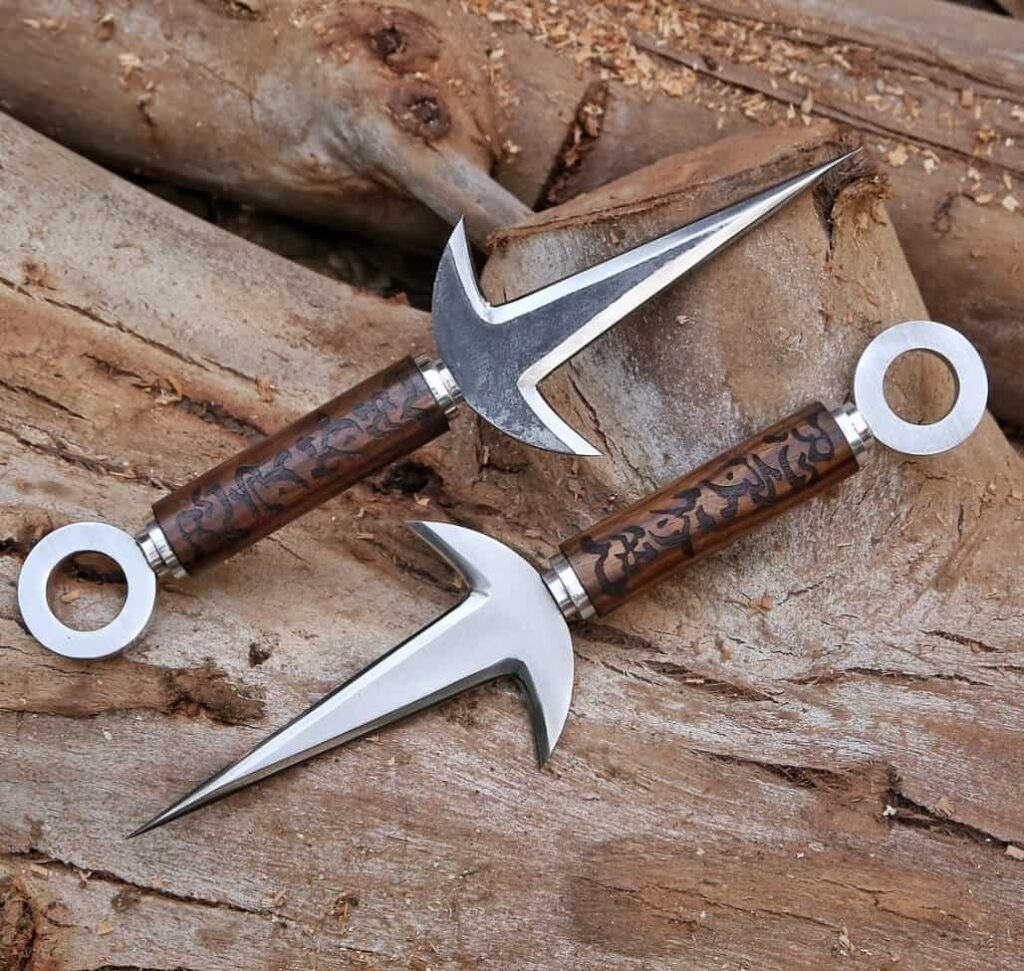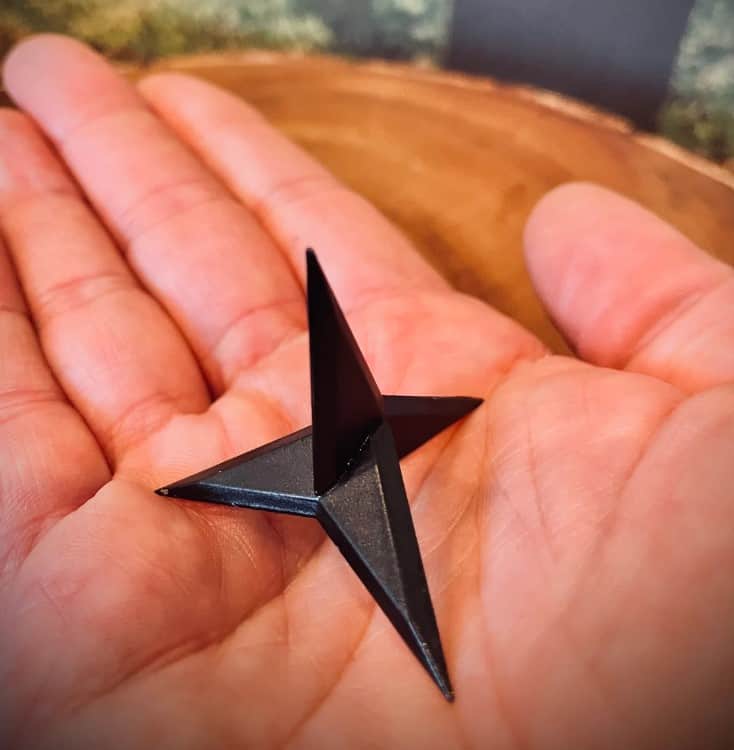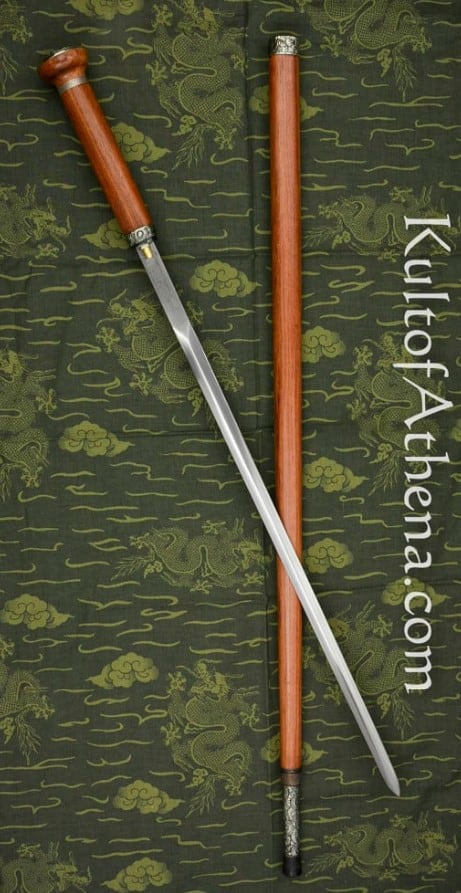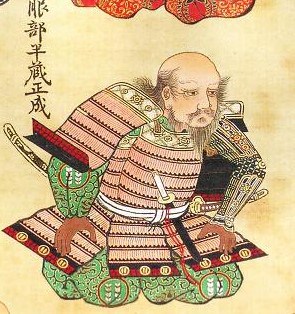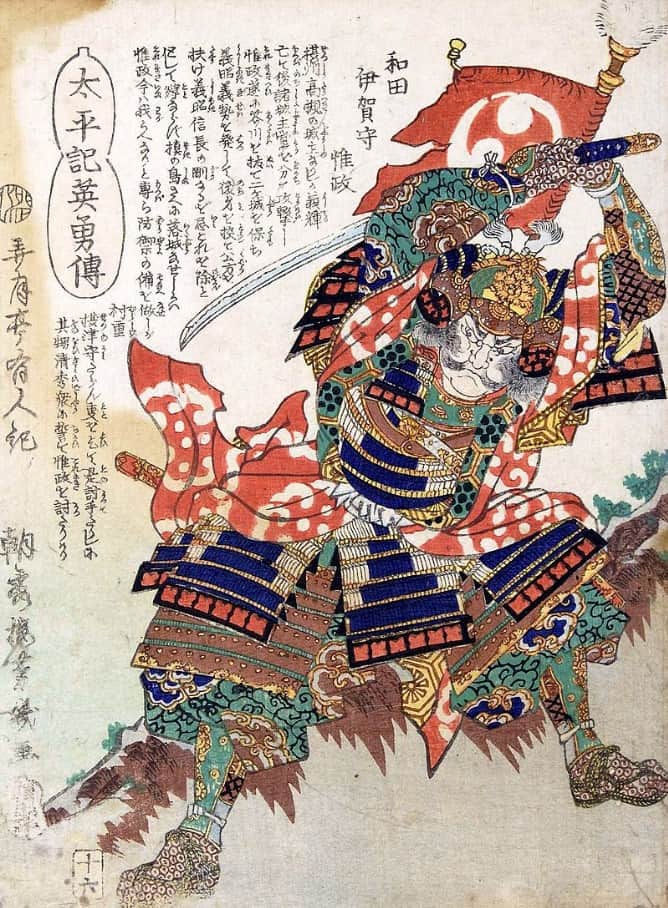Ninja Sword Mastery: Unveiling the Secrets of this Legendary Weapon
In the shadows of history, where secrets are whispered and legends are woven, one weapon emerges as the quintessential embodiment of stealth, precision, and enigmatic allure.
Ladies and gentlemen, brace yourselves for an expedition into the realm of the ninja sword – a weapon that transcends the ordinary, embracing the extraordinary, and revealing the secrets of a world shrouded in mystery.
Just as the darkness conceals a ninja’s path, so too does the ninja sword veil its formidable power until the precise moment it strikes. It’s time to unlock the cryptic vault of the past, and delve into the art of ninja swords.
What is a ninja sword?
The ninjatō, also known as the ninjaken or shinobigatana, is a legendary weapon associated with the shinobi of feudal Japan. Despite lacking concrete historical evidence before the 20th century, it has become a prominent symbol in popular culture and is often depicted as the quintessential ninja sword.
Appearance
The ninjatō is commonly portrayed as a short sword with a straight blade, resembling the shikomizue, a sword hidden in a cane or staff.
The blade is typically depicted as being less than 60 cm in length, with a thickness and weight that sets it apart from the traditional curved Japanese swords like the katana.
The guard of the ninjatō is often described as square, unlike the more common round guards found in traditional swords.
Historical Context
Historically, there is no concrete evidence of the ninjatō’s existence during the Sengoku to Edo periods. The designs attributed to the ninjatō are believed to have been inspired by wakizashi or chokutō swords, or even swords used by ashigaru (foot soldiers). The lack of physical evidence makes it challenging to chronicle the weapon’s history before the 20th century.
Usage
Due to the scarcity of historical records, much of the information about the ninjatō’s usage remains speculative. In films and stage performances, it is depicted as a shorter sword compared to the katana, but its techniques mirror those of the katana.
Various written sources suggest potential usage techniques, including fast draw techniques that combine defense and attack, thrust fencing techniques, and even a reverse grip.
Scabbard and Tsuba
The scabbard of the ninjatō is said to have served multiple purposes, such as being used as a breathing tube for underwater activities or as a device for covertly listening to conversations.
Some sources also suggest that the scabbard was longer than the blade, allowing it to conceal objects like chemicals or tools.
The tsuba, or hand guard, of the ninjatō is often depicted as larger and square, potentially serving as a tool for the ninja to extend their reach or assist in certain activities.
Cultural Impact
The ninjatō gained prominence in the 20th century. The first known photograph of a straight-blade ninjatō appeared in a 1956 Japanese booklet. It was featured in movies like “Shinobi no Mono Kirigakure Saizō” and “Revenge of the Ninja,” as well as books by Masaaki Hatsumi and Stephen K. Hayes.
The weapon’s portrayal in popular culture, including films, television, and literature, has solidified its status as an iconic weapon associated with the ninja.
While the historical veracity of the ninjatō remains debated, its unique characteristics and cultural significance have made it an enduring symbol of ninja lore and a fascinating element of Japanese martial history.
Are ninjas real?
Ninjas, also known as shinobi, were covert agents and experts in guerrilla warfare during feudal Japan. They played a variety of roles, including siege warfare, infiltration, reconnaissance, espionage, and deception.
The ninja’s activities included ambushes, espionage, and various forms of unconventional warfare. However, their tactics were often considered dishonorable by the samurai class.
The ninja emerged during the Sengoku period (15th century) as specially trained warriors, spies, and mercenaries. They were often recruited from the lower class and operated in secret, trading their skills for money without seeking honor or glory. Historical accounts of the ninja are scarce due to their lower social status and the focus on samurai in historical literature.
Ninjas were known for their secretive nature and were trained in techniques like shinobi-no-jutsu and shinobijutsu, which focused on concealing their existence and performing covert operations. Some manuals described their fighting techniques, such as making silent footwear, using stealthy tools like makibishi, and employing tactics for various scenarios.
The Iga and Kōga clans were notable ninja groups based in Iga Province and Kōka District. These clans were known for their specialized skills and were hired as mercenaries and spies by different factions. They played roles in battles, sieges, and even aided in defending castles.
During the Shimabara Rebellion in the 17th century, Kōga ninja were employed against Christian rebels, showcasing their skills in intelligence gathering, infiltration, and combat.
As Japan entered the Edo period, the need for ninja diminished due to a lack of major wars. Some ninja became security guards or transitioned into other professions like medicine, merchandising, and martial arts. The perception of ninja in popular culture was often shaped by theater and folklore, which emphasized their mysterious and sometimes supernatural abilities.
In recent times, there has been renewed interest in ninja studies. The last authentic heir of ninjutsu, Jinichi Kawakami, chose not to pass on his teachings, and instead, a focus on historical research and scholarship has emerged.
In 2017, Mie University established the world’s first research center devoted to ninja studies, aiming to understand historical ninja practices and apply their wisdom in modern contexts.
Overall, ninjas were highly skilled covert operatives who played a significant role in feudal Japan’s military landscape, employing tactics that were both unconventional and effective.
What weapons did ninjas use?
Ninjas were skilled operatives who utilized a wide array of tools and weaponry, all in service of their espionage, survival, and combat objectives. The historical information and legends suggest that ninjas were versatile and resourceful individuals who adapted to various situations. Here’s a description of the weapons they used based on the provided information:
Weaponry
Katana: The katana, a traditional Japanese sword, was often the weapon of choice for ninjas. It served not only for combat but also had practical applications like probing and climbing. The scabbard could be used to extend the sword’s reach, and the guard could aid in climbing.
Shuriken: Shuriken, often referred to as throwing stars, were small, sharp-edged objects used for both offensive and defensive purposes. They were commonly used as ranged weapons to distract or disable enemies.
Kunai: The kunai was a versatile tool resembling a heavy pointed knife or small dagger. While not primarily a weapon, it could be used for digging, prying, and creating openings in walls for infiltration.
Kusarigama: The kusarigama was a unique weapon consisting of a chain with a weight on one end and a sickle on the other. It was used for both close-range combat and as a tool for entangling opponents.
Explosives: Ninjas employed various types of explosives, including hand-held bombs and grenades. These could be used for distractions, creating chaos, or attacking opponents. They also used devices for creating smoke or releasing poison gas.
Bows and Arrows: Bows were used by ninjas for ranged attacks and sharpshooting. Some ninjas had smaller bows that were easier to conceal and use in covert operations.
Blowguns (Fukiya): Blowguns were employed for stealthy ranged attacks, often utilizing poisoned darts. They allowed ninjas to engage enemies from a distance without revealing their position.
Makibishi: Makibishi were caltrops or spiked objects scattered on the ground to impede pursuit. They were effective in slowing down or injuring pursuers, giving the ninja a chance to escape.
Shikomizue: Shikomizue were cane swords, where a sword blade was concealed within a walking cane. This allowed the ninja to carry a hidden weapon while appearing unarmed.
Firearms: Firearms, although not as common, were used by some ninjas for ranged attacks. The introduction of firearms from China influenced ninja weaponry during the Mongol Invasions.
Metsubushi (Blinding Powder): The happō, an eggshell filled with blinding powder, was used for escape. The ninja would break the eggshell to create a blinding distraction and facilitate a getaway.
Famous ninjas in history
Many of these individuals have been associated with ninja activities, but concrete evidence is often lacking. Here’s a brief overview of some famous figures:
Kumawakamaru (13th–14th centuries): Kumawakamaru was not a ninja himself but rather a youth seeking revenge for his father’s death. He assassinated the monk Homma Saburō, who was responsible for his father’s execution. The yamabushi Daizenboh assisted him, and he is sometimes associated with ninja activities.
Yagyū Munetoshi (1529–1606): Yagyū Munetoshi was a renowned swordsman of the Shinkage-ryū school. While tales of his ninja status were told by his grandson Jubei Muneyoshi, these claims are largely anecdotal and not widely substantiated.
Hattori Hanzō (1542–1596): Hattori Hanzō was a samurai who served under Tokugawa Ieyasu. He is often depicted as a ninja in popular culture due to his connection to the Iga region and his role in espionage, but the extent of his involvement in traditional ninja activities is debated among historians.
Ishikawa Goemon (1558–1594): Goemon is known for various legendary tales, including an attempt to assassinate Oda Nobunaga. However, many of these stories are considered folklore, and the details are difficult to verify.
Fūma Kotarō (d. 1603): Fūma Kotarō is rumored to have been a ninja who was rivals with Hattori Hanzō and even responsible for his death. The Fūma shuriken is named after him, but much of his story is also based on legends.
Mochizuki Chiyome (16th century): Chiyome created a school for girls that taught both geisha skills and espionage techniques. While there is historical evidence of her activities, the extent of her involvement in espionage and ninja activities remains speculative.
Momochi Sandayū (16th century): Momochi was a leader of the Iga ninja clans and is said to have escaped Oda Nobunaga’s attack on Iga. His fate and activities after that event are subject to debate and legend.
Fujibayashi Nagato (16th century): Fujibayashi Nagato is considered one of the “greatest” Iga jōnin, along with Hattori Hanzō and Momochi Sandayū. His descendants wrote and edited the Bansenshukai, a ninjutsu manual.
Katō Danzō (1503–1569): Katō Danzō, also known as “Flying Katō,” is considered a famed 16th-century ninja master. He is often depicted as an expert in various ninja techniques.
Tateoka Doshun, Karasawa Genba, Wada Koremasa, Shimotsuge no Kizaru, Takino Jurobei: These are individuals from various clans and samurai backgrounds who are said to have engaged in ninja-like activities during the Sengoku period. Their roles and actions as ninjas are often based on oral tradition and later writings.
Where Can I Get My Own Ninja Sword?
Kult of Athena – Hanwei Ninjato
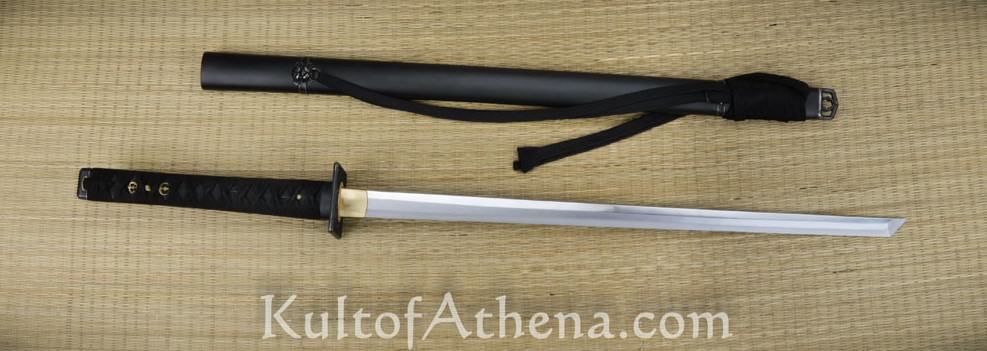
Features:
- High-Quality Construction: Crafted by Hanwei, the Practical Shinobi Ninja-to is meticulously made with a hand-forged high-carbon steel blade, ensuring durability and authenticity.
- Differentially Tempered Blade: The blade is differentially tempered using a traditional claying method, enhancing its strength and resilience.
- Antiqued Black Iron Fittings: All the fittings (koshirae) are elegantly designed in antiqued black iron, adding a touch of historical authenticity.
- Ornate Tsuba: The ornate tsuba features the kuji-kiri, symbolic hand positions used by mystical ninjas, adding an intriguing aesthetic element.
- Synthetic Ray Skin Wrap: The tsuka (handle) is wrapped in synthetic black ray skin (same), providing a comfortable and secure grip. The tsuka-ito is crafted in imitation black leather for added authenticity.
HanBon Forge – Handmade Ninja Sword

Features:
- High Carbon Steel Blade: Crafted from AISI 1095 high carbon steel using traditional sword-making techniques, ensuring durability and authenticity.
- Differentially Clay Tempered: The blade undergoes a clay covering and water quenching process, creating a temperature difference that results in an authentic hamon pattern on the blade.
- Hand-Polished Blade: Meticulously hand-polished with multiple-grade sharpening stones to achieve a mirror-like surface finish.
- Authentic Design: Features a Chu-kissaki (medium-length tip), two long Hi (grooves) on the blade, and a fish-themed alloy Tsuba (guard) and menuki for a genuine Samurai Ninja sword design.
- Full Tang Construction: Built with a full tang blade, offering durability and balance. The handle includes genuine black ray skin Samegawa, white synthetic silk tsuka-ito, and sageo for a tight and comfortable grip.
Etsy – Ninja Sword by TrueKatanaUSA

Conclusion
As we bid adieu to the shadows and slip back into the world of the ordinary, remember that the legacy of the ninja and their iconic weapon endures. The tales of stealth, cunning, and razor-sharp expertise continue to capture our imagination, inspiring us to embrace the unexpected and cultivate our own forms of mastery.
Whether you’re a silent night prowler or a curious historian, the enigma of the ninja sword is bound to leave an indelible mark on your journey through the pages of history and the realm of legend. Until the next time, may your steps be swift, your blade be keen, and your heart, as always, a true ninja’s unseen.

